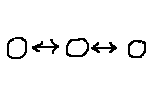Step-by-Step Instructions
Examples:
-
Wizards
-
Installation instructions for all kinds of appliances, software, etc.
-
Recipes
-
Repair manuals
-
Getting cash from an ATM
Context: A user needs to perform a complex task, with
limited time, knowledge, attention, or space. Alternatively, the nature
of the task is step-by-step, and it's meaningless to show all the action
possibilities at once.
Problem: How can the artifact unfold the possible
actions to the user in a way that does not overwhelm or confuse them, but
instead guides them to a successful task completion?
Forces:
-
The user doesn't always want, or need, to understand all the details of
what they are doing.
-
A user presented with a bunch of possible actions, in no prescribed order,
may not have any practical way to figure out what to do first, second,
etc.
-
A user who is afraid of doing something wrong may prefer that the actions
they have to perform be explicitly spelled out for them.
-
The whole task can't be performed entirely automatically, because it requires
choices or information from the user.
Solution: Walk the user through the task one step
at a time, giving very clear instructions at each step. Use visual
similarities in all the steps, e.g. typography and layout, to maintain
a rhythm throughout the task; make each step a focal point, both visually
and in the user's "attention space." If information is needed from
the user, ask for it in simple terms and with brevity; by keeping it short,
you can better maintain the user's sense of flow through the whole step-by-step
process.
 The task may branch like a flow chart, depending upon what information
the user gives it, but the user doesn't necessarily need to know about
all the available paths through the task. If it's not likely to confuse
the user, show the steps as a Map
of Navigable Spaces. If possible, allow the user to back out of the
steps (Go Back One Step, Go
Back to a Safe Place). If the sequence of steps as seen
by the user is too long -- more than ten steps, for example -- try to break
it up into manageable sub-sequences, so it doesn't get too tedious for
the user. Make sure the sub-sequences relate to each other in a meaningful
way, however, or the user may see it as gratuitous or annoying.
The task may branch like a flow chart, depending upon what information
the user gives it, but the user doesn't necessarily need to know about
all the available paths through the task. If it's not likely to confuse
the user, show the steps as a Map
of Navigable Spaces. If possible, allow the user to back out of the
steps (Go Back One Step, Go
Back to a Safe Place). If the sequence of steps as seen
by the user is too long -- more than ten steps, for example -- try to break
it up into manageable sub-sequences, so it doesn't get too tedious for
the user. Make sure the sub-sequences relate to each other in a meaningful
way, however, or the user may see it as gratuitous or annoying.
Sometimes users may want to know more about what they're doing -- Optional
Detail On Demand gives you a way to present that extra information.
Also, if a user has gone through a lot of steps, they have trouble remembering
what they've done and why. At least provide a Progress
Indicator if the number of steps grows beyond seven or eight, which
is the average limit of short-term memory. If a lot of user interaction
is necessary, such as for branching decisions, consider providing an Interaction
History
Resulting Context: Narrative
is a good choice for presenting the task steps themselves; the use of natural
language to describe what needs to be done is intuitively obvious, and
puts a user at ease. Go Back One
Step and Go Back to a Safe Place,
along with a corresponding Forward control, can be used to move through
an interactive task.
To get information from the user, you can use a Form
or its simpler component patterns, especially Choice
from a Small Set and Forgiving
Text Entry. Using Good Defaults
with them allows the user to move smoothly past the points where extra
data entry is unnecessary, again preserving the sense of flow. Finally,
a small set of Convenient
Environment Actions should give the user ways to cancel or suspend
the task without having to back out of it one step at a time.
Notes: Be aware that this pattern may irritate experienced
users. If a user knows exactly what they need to do, and want to
do it quickly, constraint to this step-by-step presentation can feel like
a straitjacket! Also, if the task to be accomplished isn't inherently
linear -- i.e. you don't really have to do one step first, another step
second, etc. -- you might provide an alternative "random access" presentation
of the possible actions, such as a Stack
of Working Surfaces.
Comments to: jtidwell@alum.mit.edu
Last modified May 17, 1999
Copyright (c) 1999 by Jenifer Tidwell. All rights reserved.

